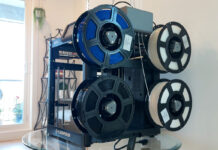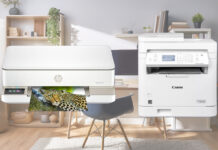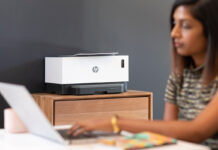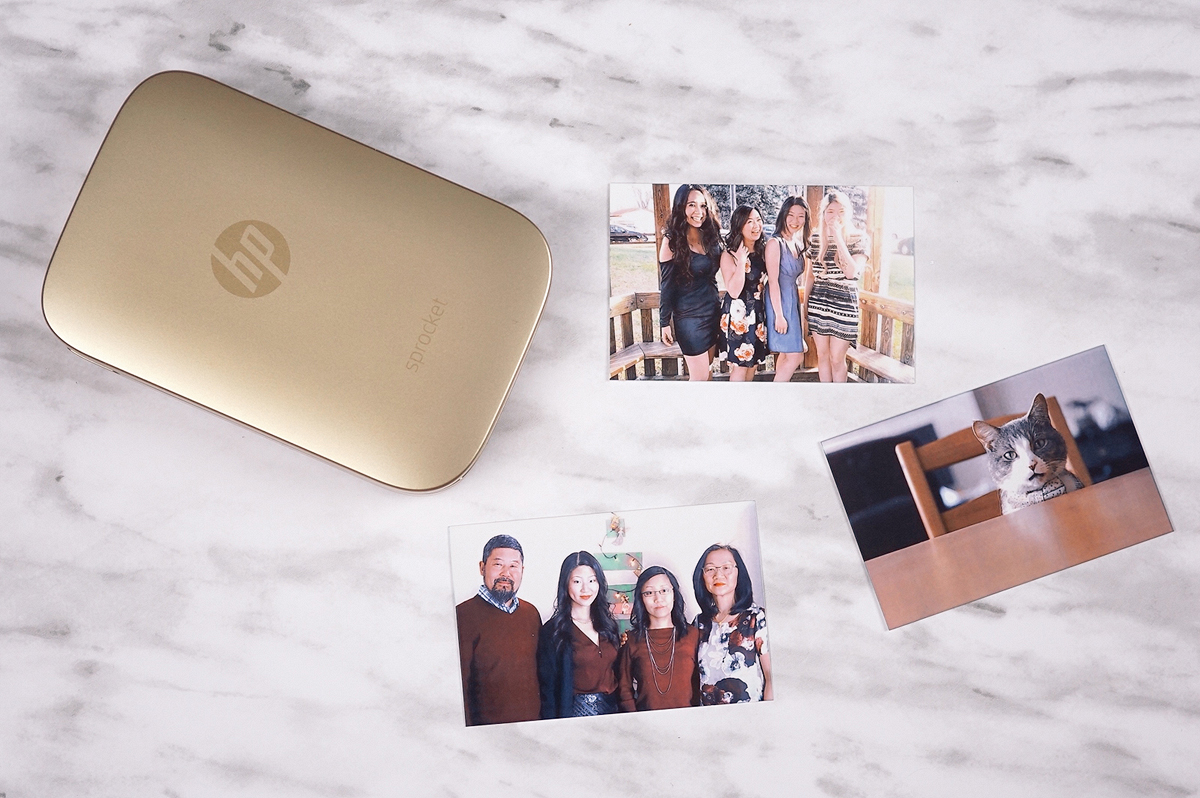
When you want to print a photo on the go, you really only have two options: the Fujifilm Instax Share, and the HP Sprocket. The Sprocket lets you print out pictures from your smartphone onto small, sticker-backed photos in seconds, and is small enough to throw into your backpack or handbag.
The HP Sprocket features
The HP Sprocket Bluetooth Photo Printer is available in five attractive colours, all with a gorgeous soft-matte finish. The one featured here is in gold (which looks great with a gold iPhone); there’s also white with gold detailing, black or red with silver detailing, and a weird, beautiful blue-violet duochrome finish.
At 11.6 cm by 7.49 cm, the Sprocket is the approximate size of a thick smartphone battery pack. For a printer, it’s tiny. My friends are routinely surprised by the fact that this little thing is a printer, and I’m not surprised. It weighs 170 grams (a lot less than a battery pack), and the top slides open to allow you to insert film. Each film packet contains 10 sheets, so it does still have a bit of that “Polaroid” feel—it’s not made for high-volume use. The film packets are really easy to insert, and the printing process is no-touch. You just queue up your items, hit “print,” and remove each photo once it’s finished printing.
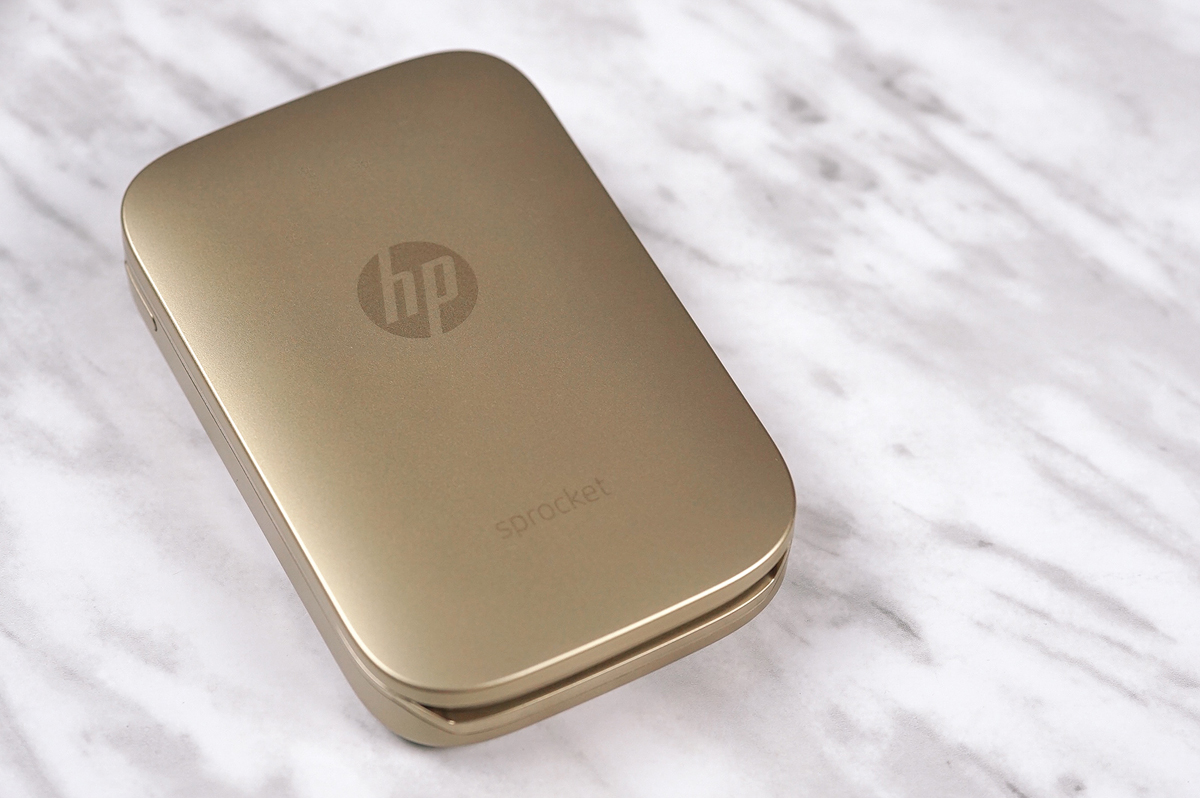
Sprocket photos print on “ZINK zero ink technology” thermal paper, which doesn’t require ink cartridges or pass-through printing. (ZINK paper is used by both HP and Polaroid. It was developed by the Polaroid Corporation in the 1990s, and is now a standalone company.) The technology behind ZINK is fascinating. It’s essentially comprised of a backing layer and an overcoat, and in between: heat-sensitive layers of initially-colourless crystals of cyan, magenta, and yellow dyes. The printer is then able to heat the entirety each piece of film at once, heating each location on the film (each “pixel,” if you will,) at different temperatures and for different durations in order to develop the correct colours.
The HP Sprocket only has one button, which you hold down to turn the device on and off. It has a micro USB input for charging, flanked by a white light to let you know that the device is on and a flickering red light to notify you of the device’s status when it comes to things like firmware updates. It pairs to your phone with Bluetooth 3.0 connectivity, and is compatible with Android devices (4.4 and higher) and iOS devices (iOS 9 and later).
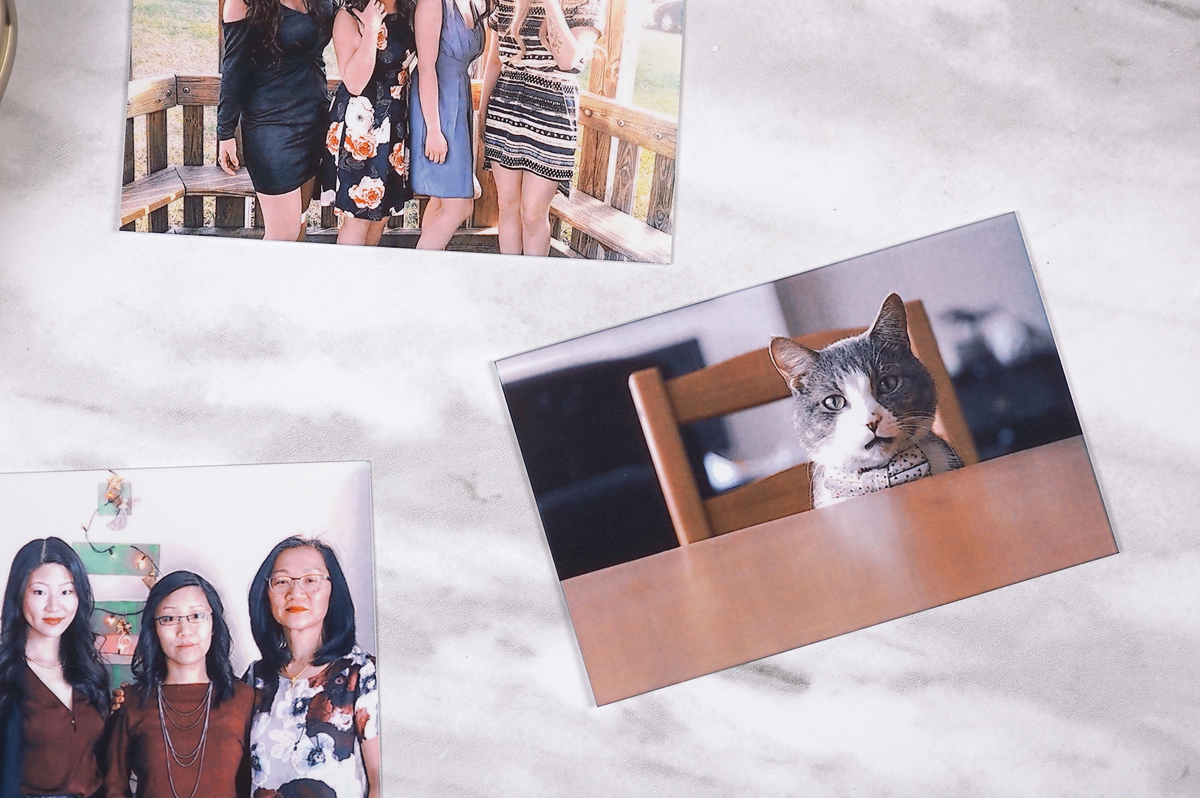
The Sprocket app
Again, much like a Polaroid, the photos produced by this printer aren’t high-volume or heavy-duty. They’re 2″ x 3″ snapshots with sticky backs, so you can slide them into your wallet or stick them on your walls. They print and queue to print through the HP Sprocket app (187 MB on iOS), which features multilingual support and an easy-to-use user interface.
You can take photos directly on the app and print them, or you can upload anything from your camera roll, Instagram, Facebook, or Google account. Photos can be edited in-app to alter brightness, saturation, crop, and contrast, or to add filters, frames, sticker drawings, or text. (Edited images can be saved to your device, printed immediately, or added to a queue for printing when you hook your printer back up to the device.)

How the HP Sprocket performs
To begin, the HP Sprocket really is great as a portable printer. It’s lightweight and tiny, and it’s a stylishly designed device. When it prints, it does it quickly and quietly, taking just under 25 seconds per photo. But it’s a portable printer, not a fully-functioning one, and that needs to be taken into consideration.
I tested this printer with a number of different types of images: photos in natural lighting, photos in artificial lighting, photos taken on a smartphone, and photos taken on an actual camera.
The Sprocket with ZINK film prints 313 x 400 DPI images. I knew this going in, but I have to admit: I was a little disappointed in the image quality here. I was hoping for an effect similar to that in old Polaroids or in instant photos like those from the Fujifilm Instax, but that isn’t the experience that I had with the Sprocket.
Don’t get me wrong: the Sprocket is a great product. It’s transportable, fast, and discreet, and it makes printing photos from your social media account or smartphone a breeze. But the photos that you get are very low resolution, with blown-out whites and highlights. (Shadows and black areas are definitely better represented on this film, so it might perform better for darker, moodier shots.)
Perhaps because these prints are made to double as stickers, the tactile sensation of handling them leaves a little to be desired, too. They’re thin and flexible, and many of the edges have a distinct cyan bleed. But though they feel cheaper than something like Fujifilm Instax Instant Film, they are actually cheaper, too. They’re about half the price for the same number of sheets, which helps to mitigate the disappointment I initially felt while handling these.

The photos that the HP Sprocket are best for
The Sprocket is a really fun gift idea or party accessory, but it has its highs and lows. I would recommend it primarily for images taken on a smartphone, which I cannot emphasize enough. The images that I took on my camera and edited on my computer look great on my computer screen, but on the ZINK film, they look terrible. The whites are blown out, the shadows end suddenly, and the edges bleed noticeably cyan.
The images taken on a smartphone and printed, however, are a lot more forgiving. Because they’re a lower quality to begin with, less detail is lost when they’re printed. There is very little shadow loss on any of these photos, but the smartphone images just look better: more like photo booth photos, and less like low-quality Microsoft Word printouts.
If you’re looking for a product that’s fun and convenient, the HP Sprocket is a great party piece or gift idea. Invest in a full-on photo printer instead if quality matters a lot to you, but this is great as a pocket photo booth, especially when paired with a smartphone camera.
Shop HP Sprocket models and colours online at Best Buy.

